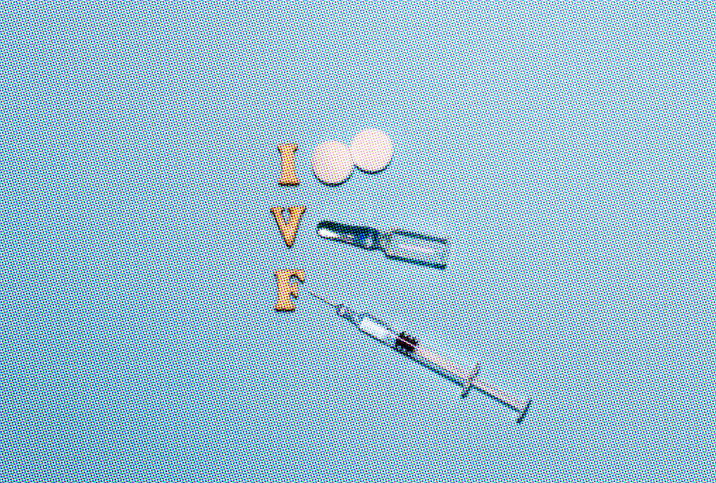What to Consider Before IVF

In vitro fertilization (IVF) is an extensive series of fertility treatments intended to help conception. Because the process can be costly and prolonged, there are several factors that you'll want to consider before deciding if IVF is the right path for you. Research has found that it takes an average of two rounds of IVF before most women conceive, so be prepared for a process that can take up to a year even in successful cases.
Despite the challenges it involves, IVF has helped countless patients grow their families in recent decades. And each year, hundreds of thousands of couples in the U.S. continue to use IVF to overcome fertility issues.
Why do people consider IVF?
People turn to IVF for a number of reasons, including infertility, genetic problems or other health issues. While there are other, less-invasive fertility treatment options available, IVF is typically used as the primary infertility treatment when the patient trying to become pregnant is over 40 years old, according to the Mayo Clinic.
IVF may also be the primary option if the patient or their partner is dealing with certain health conditions, such as endometriosis, fallopian tube damage or blockage or an ovulation disorder. Other conditions, such as uterine fibroids, can also make it difficult for a fertilized egg to become implanted in the uterus, making IVF a potential solution.
Other reasons people consider IVF include:
- They’ve had their tubes tied. Some patients change their mind about getting pregnant after previously having had tubal sterilization, a procedure in which the fallopian tubes are cut or blocked to permanently prevent pregnancy. Using IVF can sometimes help these patients get pregnant without requiring them to undergo surgery to reverse their tubal sterilization.
- Their partner has low sperm count or function. Sometimes the root of semen abnormalities can be found and corrected. But if that isn't possible, IVF using sperm from a donor may be an option.
- There are genetic issues. Couples who are at risk of passing a genetic disorder on to their offspring often turn to IVF. In these cases, the patient's eggs are collected and fertilized, but they are first tested for any detectable genetic problems before they are implanted into the uterus.
- They want to preserve their fertility. Not all people who use IVF do so with the intention of getting pregnant immediately. It's not uncommon for patients who are younger and want to start a family later, or are about to begin cancer treatment, to use IVF to harvest their eggs to preserve their fertility for future use. This can be a useful way to protect eggs for the future, as cancer treatments such as radiation and chemotherapy can be potentially harmful to fertility, and not everyone is able to begin a family before fertility drops at age 35.
What the physical process looks like
A single cycle of IVF can take anywhere from two to three weeks to complete, and each cycle involves multiple steps, including ovarian stimulation, egg retrieval, sperm retrieval, fertilization and embryo transfer. If the first cycle is not successful, multiple cycles may be needed.
Ovulation induction: If you want to use your own eggs during IVF, you'll start your cycle by taking synthetic hormones that are designed to stimulate your ovaries so your body produces multiple eggs, rather than the single egg that is usually released during your monthly ovulation. Self-injections at home are the usual way to administer these hormones. Ovulation induction is one of the most important steps in IVF because when more eggs are produced, there are more chances for fertilization. This is essential because not all eggs will achieve fertilization.
Fertility medication: In addition to the hormone treatments, you'll also get a medication called human chorionic gonadotropin (hCG), or something similar, which will help your eggs to mature. Other medications included in IVF treatments are intended to prevent premature ovulation and to prepare the lining of your uterus so that it is more receptive to implantation once an egg has been fertilized and the embryo is ready to be transferred to the uterus.
Checking on the eggs: To determine whether your eggs are ready for collection, your doctor will likely perform a vaginal ultrasound to take a closer look at your ovaries. You should also expect blood tests to find out how your body is responding to the hormone treatments.
If the eggs aren't developing successfully, your IVF cycle may need to be canceled. After cancelation, your doctor may adjust the doses of your medications in order to create better success in future IVF cycles. If your response to an IVF cycle is particularly unsuccessful, your doctor might suggest that you seek an egg donor.
Egg retrieval: When eggs are ready to be collected, the retrieval procedure will be conducted in a doctor's office 34 to 36 hours after you have received your final hormone injection and before you ovulate. The retrieval is typically performed through transvaginal ultrasound aspiration, a procedure in which an ultrasound probe is inserted into the vagina to identify follicles. After the probe is inserted, a thin needle connected to a suction device is used to go into the follicles and collect the eggs over the course of about 20 minutes. A retrieval can be painful and most doctors prescribe pain medication to take home.
Fertilization: Mature and healthy eggs are sent to a lab where they are mixed with sperm, which is collected from the patient's partner or a sperm donor. The hope is that multiple eggs are successfully fertilized, creating embryos that can be implanted into the patient's uterus.
Embryo transfer: If an embryo is successfully created, it is then either frozen for future use, or a transfer procedure is performed a few days after the eggs were first collected. The procedure is usually performed in a doctor's office, where the physician will insert a catheter into the vagina, through the cervix and into the uterus. Then one or more embryos will be sent through the tube into your uterus. Embryo transfers are typically painless, with mild sedation, though the procedure can cause cramping.
After a follow-up appointment, the patient will find out whether the embryo successfully implanted into the lining of the uterus about 12 to 14 days after the initial egg retrieval, according to the Mayo Clinic.
Potential challenges of IVF
For many people, getting IVF is a wonderful tool that helped them in their efforts to become pregnant. But IVF is also a complicated process that can take a significant toll on a patient both physically and psychologically. You want to be sure that you are fully prepared for the physical, emotional and financial costs involved with fertility treatments. A single IVF treatment is estimated to cost about $12,000, while the medications you have to take during treatment can cost an additional $3,000 or more. What's more, patients often need to undergo multiple rounds of IVF before finding success.
Despite the challenges it involves, IVF has helped countless patients grow their families in recent decades.
Keep in mind that, as is the case with any medical procedure, IVF carries the risk of complications, including miscarriage, infection, premature delivery and birth defects. Be sure to talk to your doctor about all of the potential risks and benefits of IVF before starting treatment.
Having fertility struggles can take an emotional toll on anyone who wishes to become pregnant, especially when efforts to do so include countless doctor appointments, daily hormone injections and multiple procedures.
The stress and anxiety that can come with unsuccessful IVF cycles may even cause a strain on your relationship as you and your partner become increasingly invested in the effort. Take care to communicate with each other during this time and to emotionally support each other. IVF may not be an easy road, but it might very well be the one that leads you to the family you've dreamed of.

















